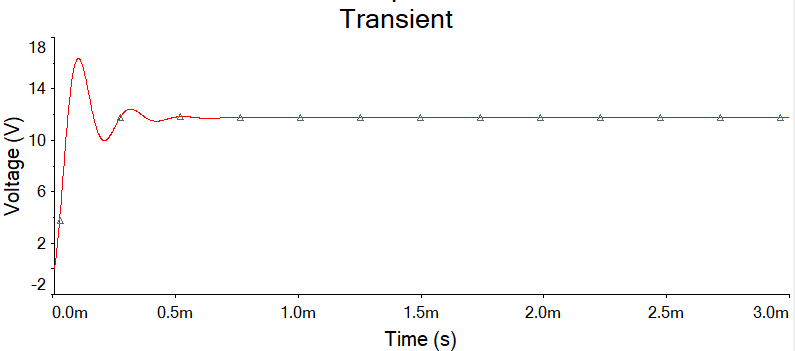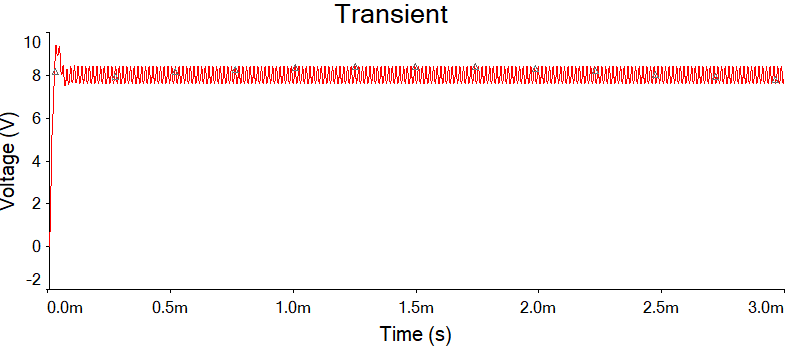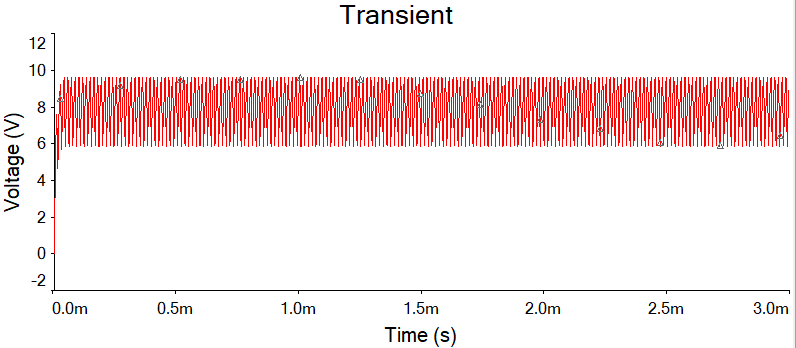PWM to constant DC voltage for fan control
-
@egon-net did you include the resistance of the inductor in your simulation? It's 2.1 ohms for the inductor that @bananapuppy is thinking of using. If the capacitor is electrolytic then you should include its ESR in the simulation too.
What happens if you simulate using a lower value capacitor, or no capacitor at all?
@bananapuppy, that inductor looks OK. It's normal for electrolytic capacitors to have 2000 hour rated life, but that will be at either 85C or 105C. In practice they last much longer at lower temperatures. You can also get 1uF ceramic capacitors.
-
@dc42 said in PWM to constant DC voltage for fan control:
@egon-net did you include the resistance of the inductor in your simulation? It's 2.1 ohms for the inductor that @bananapuppy is thinking of using. If the capacitor is electrolytic then you should include its ESR in the simulation too.
What happens if you simulate using a lower value capacitor, or no capacitor at all?
I added a 2 Ohm series resistor to the inductor, but didn't add anything to the capacitor (I'm used to use low ESR electrolytics). I'll perform a test and show the results.
Regarding the capacitor, the lower the capacitor the smaller the transient, but the worse the ripple too. -
@dc42 here are the results:
2.1 Ohm ESR for Inductor, 7 Ohm ESR for capacitor, 100%PWM:

It still overshoots, but less than before.
Now, witha 100nF capacitor, 50% PWM:

The overshoot is almost gone, but ripple increases.And finally without capacitor at all (same 50% PWM):

No transient, but lots of ripple. -
@egon-net thanks, looks like 100nF might be a good value to use then.
-
@egon-net thanks for making these graphs, very useful to me! Does the voltage still overshoot to about 16V with 100% PWM, when using a 100nF capacitor?
How about a capacitor somewhere between 100nF and 1µF? I.e. 0.47µF for instance, I figure that might be a nice middle ground for ripple with not too much of an overshoot
 ?
? -
@bananapuppy you are welcome

With a 100nF capacitor the overshoot should be about 1.5V (13.5V max for 12V), and ripple about 1VppThe bigger the cap, the bigger the overshoot.
-
A ripple of 1V p-p is unlikely to matter.
-
@dc42 said in PWM to constant DC voltage for fan control:
A ripple of 1V p-p is unlikely to matter.
I agree.
Is there any drawback for the Duet with the highest PWM frequencies (CPU/resource usage wise) besides a tiny bit more power consumed by the mosfet?
-
-
@bananapuppy said in PWM to constant DC voltage for fan control:
SA105E104MARTB AVX
Ceramic is ok, but I'd try to get one with X5R or X7R dielectric. The one you picked has Z5U dielectric which is not that good.
-
@egon-net no idea what that difference means (if someone can recommend me a good electronics course, please do
 ), but the following should be good then!?
), but the following should be good then!? 
CM-100N-X7R SR PASSIVES
-
@bananapuppy said in PWM to constant DC voltage for fan control:
CM-100N-X7R
Yes, that's 100nF 100V X7R.
-
@egon-net said in PWM to constant DC voltage for fan control:
@dc42 said in PWM to constant DC voltage for fan control:
A ripple of 1V p-p is unlikely to matter.
I agree.
Is there any drawback for the Duet with the highest PWM frequencies (CPU/resource usage wise) besides a tiny bit more power consumed by the mosfet?
Just a little more heat dissipation in the mosfet, and perhaps slightly poorer resolution in the PWM setting.
-
@dc42 nice, thanks!
-
 undefined droftarts referenced this topic
undefined droftarts referenced this topic